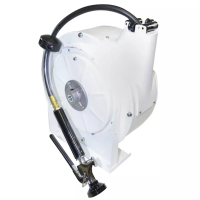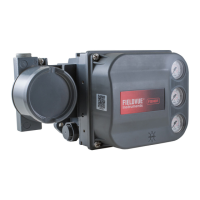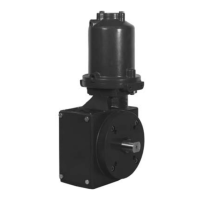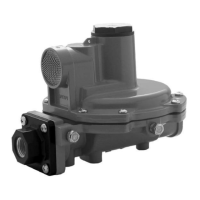5-50 Configurafion
[FISHER”]
H The first tuning, for the case where the reference signal is in the
lowest range, O-33 percent, is complete and the derived PID
values are stored in all levels (FCODE 36,37,36), (39,40,41) and
(42,43,44).
Function Parameters
PID Pa- Gain
ram&r 1 Ti (Reset)
Td (Rate)
FCODE Range Unit Increment Default Selected
V&K2
Value
i;
0.01-99.99 -
0.01 0.01
OFF-9999 s
IS
1000s
38 o-9999 s
IS 0
H The tuning for the second range (33-67 percent) is complete after
values have been derived at reference signal level 2. The derived
values for this range are also stored as the values for the third
level (FCODE 39,40,41) and (42,43,44).
5.11.2 Selecting Gain Scheduling
Function Parameters
PID Pa- Gain
rameter
2 Ti (Reset)
Td (Rate)
FCODE Range
Unit Increment Default Selected
Value Value
39 0.01-99.99 -
0.01 0.01
40 OFF-9999 s
IS 1000s
41 o-9999 s IS 0
n
The reference signal has increased to range 3 (67-i 00 percent)
and tuning is complete. The values for this range are stored in the
third level (FCODE 42,43,44).
Function
Parameters
PID Pa- Gain
rameter 3 Ti (Reset)
Td (Rate)
FCODE Range Unit
Increment Default Selected
Value Value
42
0.01-99.99 - 0.01 0.01
43
OFF-9999 s IS 1000s
44 o-9999 s
1s 0
n
A further tuning has been done when the reference signal
returned to range 2. The system remembers that the tuning has
been performed at all levels, so that only values at level 2 are
changed.
If gain scheduling is deactivated during operation, the controller will fill
the parameter with the active set of PID terms at all levels.
Use FCODE 34 and 35 to set the breakpoints between the three
ranges, if the default breakpoints are not appropriate.
Function Parameters FCODE Range Unit Increment Default Selected
Value Value
Gain LOW3 34
O-100 % 1% 33%
Scheduling
UPPer
35 O-100 % 1% 67%
Breakpoints
May 7991
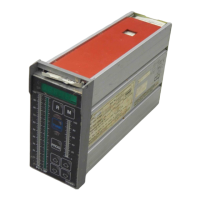
